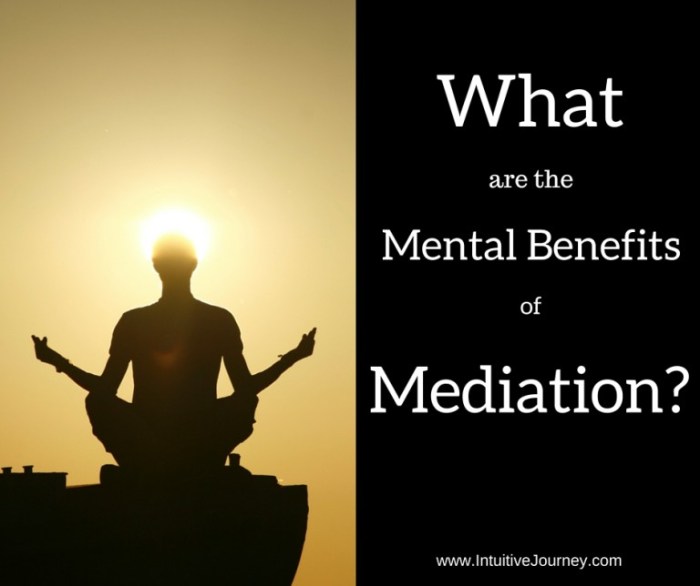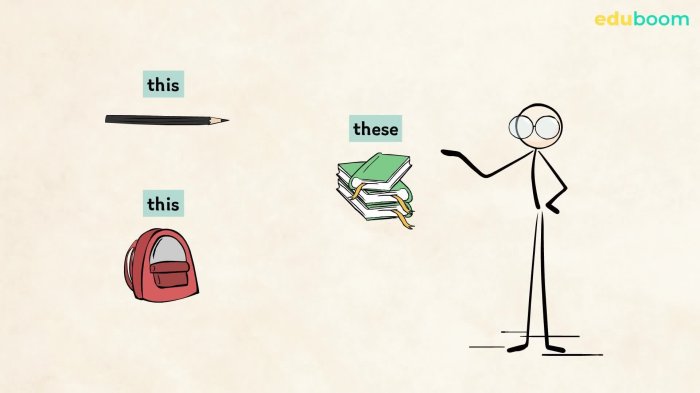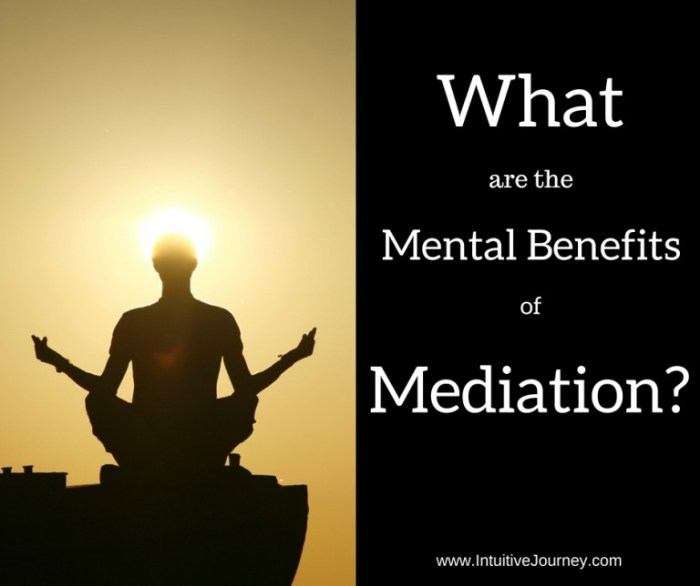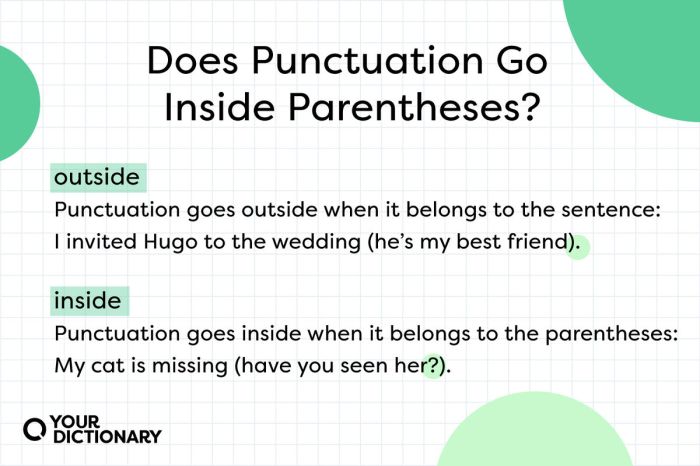Mindful meditation for anxiety is a powerful tool for managing and reducing anxiety symptoms. This journey explores the principles of mindfulness, delving into various meditation techniques and their application in everyday life. We’ll uncover the benefits of incorporating mindful breathing, body scan meditations, and other practices into your anxiety management strategy, along with insights into the historical context and misconceptions surrounding this powerful technique.
By understanding the different types of meditation practices, we can tailor our approach to individual needs. We’ll analyze the effectiveness of each technique in reducing anxiety symptoms and discover the specific actions and procedures involved in each method. The practical application of these techniques in daily routines, and how to overcome common challenges like wandering thoughts, will be explored in detail.
Furthermore, the integration of mindful meditation with a holistic approach to anxiety management will be examined, highlighting the importance of lifestyle choices and existing therapies.
Introduction to Mindful Meditation for Anxiety
Mindful meditation is a practice that involves paying attention to the present moment without judgment. It’s a powerful tool for managing anxiety because it helps us to detach from anxious thoughts and feelings, allowing us to observe them without getting swept away by them. This detached observation, a core principle of mindfulness, can significantly reduce the intensity and impact of anxiety.The basic principles of mindfulness involve focusing on the present moment, acknowledging thoughts and feelings without reacting to them, and cultivating a sense of awareness.
By practicing these principles, individuals can develop a greater understanding of their own emotional responses to stress and anxiety, leading to improved coping mechanisms. This understanding empowers them to respond more effectively rather than reacting impulsively.
Common Misconceptions about Mindful Meditation and Anxiety
Many people hold misconceptions about mindful meditation and its role in anxiety management. Some believe it’s a quick fix or a replacement for professional help. Others feel it’s overly complex or that they lack the necessary discipline to practice it effectively. However, mindful meditation is not a magical cure, and it’s important to integrate it into a holistic approach to anxiety management.
Furthermore, the practice can be tailored to individual needs and preferences, making it accessible to most people.
Potential Benefits of Mindful Meditation in Anxiety Management
Mindful meditation offers a range of potential benefits for anxiety reduction. It can help reduce the frequency and intensity of anxious thoughts, promoting emotional regulation. This can lead to improved sleep quality, reduced physical symptoms of anxiety (such as muscle tension and headaches), and increased feelings of calm and well-being. Consistent practice can also enhance self-awareness, allowing individuals to identify triggers and develop more effective coping strategies.
For instance, recognizing a racing heart as a physical sensation rather than a harbinger of disaster is a crucial step toward managing anxiety.
Mindful meditation can be a powerful tool for managing anxiety, helping you focus on the present moment and calm racing thoughts. Sometimes, though, the sheer volume of digital clutter can contribute to feelings of overwhelm. A helpful tool for organizing that digital space is a folder size Windows Explorer extension, like the one available here folder size windows explorer extension.
By easily visualizing file sizes, you can declutter your digital environment, which in turn can free up mental space and support your mindful meditation practice. This can significantly improve your ability to stay present and reduce anxiety.
Historical Context of Mindfulness and Meditation in Relation to Anxiety
Mindfulness practices have ancient roots. Buddhist traditions, for example, have incorporated mindfulness and meditation for centuries as methods to cultivate awareness and reduce suffering. These practices have been observed to effectively address stress and anxiety. In modern times, research has demonstrated the efficacy of mindfulness-based interventions for various mental health conditions, including anxiety disorders. This evidence further supports the practice’s potential in anxiety management.
Studies have shown that mindfulness-based stress reduction (MBSR) programs can significantly decrease anxiety symptoms.
Types of Mindful Meditation Practices for Anxiety
Mindful meditation offers a range of techniques to manage anxiety. By focusing on the present moment, these practices help to detach from anxious thoughts and cultivate a sense of calm. Different approaches resonate with different individuals, so exploring various methods can help you discover what works best for you.
Different Mindful Meditation Techniques
Various mindful meditation techniques can effectively address anxiety. Each technique employs specific actions and procedures to achieve a state of calm and reduce anxious feelings. The effectiveness of each technique varies based on individual needs and preferences.
Body Scan Meditation
Body scan meditation involves systematically bringing awareness to different parts of the body. This practice helps to identify and release physical tension often associated with anxiety. By noticing sensations without judgment, you can ground yourself in the present moment and reduce the physical manifestation of anxiety. Starting with the feet and gradually moving upwards, the practitioner observes sensations such as tingling, warmth, or pressure.
Mindful meditation can be a real game-changer for anxiety, helping you focus on the present moment and calm racing thoughts. While you’re practicing, consider incorporating hydrating beverages like coconut water, which offers surprising benefits. For example, did you know that 8 benefits coconut water you didnt know about are connected to improved hydration and electrolyte balance, potentially boosting your overall well-being?
Ultimately, these small choices can support your mindful meditation practice and your journey towards managing anxiety effectively.
This mindful observation of physical sensations helps to disconnect from racing thoughts and promotes a sense of groundedness.
Mindful Breathing
Mindful breathing is a powerful tool for managing anxiety. Focusing on the breath anchors the mind in the present moment, interrupting the cycle of anxious thoughts. The technique involves observing the sensation of the breath entering and leaving the body, without attempting to control it. This simple act of awareness can quickly calm a racing mind, reduce feelings of panic, and foster a sense of peace.
By concentrating on the breath, individuals can develop a greater awareness of their bodily responses to anxiety, allowing them to regulate their reactions more effectively.
Walking Meditation
Walking meditation combines mindful awareness with the physical act of walking. This practice cultivates present moment awareness and helps to regulate emotions. By focusing on the physical sensations of walking—the weight of the feet on the ground, the movement of the body, and the sensations in the legs and arms—individuals can bring their attention to the present moment, rather than dwelling on anxious thoughts.
Mindful meditation can be a fantastic tool for managing anxiety, offering a practical approach to calming the mind. Instead of focusing on rigid New Year’s resolutions, which often lead to disappointment, consider integrating mindfulness practices into your daily routine. Exploring alternatives to new year’s resolutions, like focusing on small, sustainable changes, can be more effective for long-term well-being.
This article offers some great ideas on that front. Ultimately, consistent mindful meditation can help you build resilience and navigate anxiety more effectively.
The focus is on the physical experience, rather than the destination or agenda.
Loving-Kindness Meditation
Loving-kindness meditation cultivates feelings of compassion and goodwill towards oneself and others. This practice involves directing well wishes to oneself, loved ones, neutral individuals, and even challenging figures. This can help to reduce self-criticism and cultivate a sense of connection, thereby reducing the negative impact of anxiety on relationships and self-esteem. The practice can create a more positive and supportive internal environment, fostering self-acceptance and compassion.
Table of Meditation Types and Applications
| Meditation Type | Focus | Anxiety Application | Example |
|---|---|---|---|
| Body Scan Meditation | Awareness of physical sensations | Grounding, reducing physical tension | Notice the sensations in your feet, then move up your body, observing tension or relaxation. |
| Mindful Breathing | Focus on the breath | Calming the mind, reducing racing thoughts | Observe the inhale and exhale, noticing the rise and fall of the chest or abdomen. |
| Walking Meditation | Awareness of bodily sensations during movement | Grounding, reducing racing thoughts | Focus on the feeling of your feet touching the ground, the movement of your legs, and the sensations in your body. |
| Loving-Kindness Meditation | Cultivating feelings of compassion and goodwill | Reducing self-criticism, fostering connection | Extend feelings of kindness and compassion to yourself, loved ones, and even challenging figures. |
Steps Involved in Each Meditation Type
The specific steps for each meditation type can vary depending on the instructor or guided meditation used. However, a general Artikel of the steps can be followed:
- Body Scan Meditation: Find a comfortable seated or lying position. Begin by focusing on your feet, noticing any sensations. Gradually move your awareness up your body, noticing sensations in each part. Notice tension and release it.
- Mindful Breathing: Find a comfortable position. Bring your attention to your breath, observing the sensations of inhaling and exhaling. Notice the rise and fall of your chest or abdomen. Acknowledge thoughts and emotions without judgment, gently returning your focus to your breath.
- Walking Meditation: Find a quiet place to walk. Focus on the sensations of your feet touching the ground, the movement of your legs, and your posture. Notice the sights, sounds, and smells around you, but do not dwell on them.
- Loving-Kindness Meditation: Find a comfortable seated position. Direct feelings of love and kindness towards yourself, then loved ones, neutral figures, and even challenging individuals. Continue to extend feelings of compassion to each person you consider.
Practical Application and Techniques
Mindful meditation isn’t just a practice; it’s a skill that needs consistent application to see its benefits. Integrating mindful techniques into your daily life is key to managing anxiety effectively. This section explores practical methods for incorporating mindfulness into your routine, along with strategies for overcoming common obstacles.Effective anxiety management often requires integrating mindfulness into daily life, not just as a stand-alone practice.
This section details how to incorporate mindful meditation into your routine, address challenges like wandering thoughts, and structure sessions for optimal anxiety relief.
Integrating Mindfulness into Daily Routines
Mindful living isn’t about dedicating hours to formal meditation. It’s about weaving mindfulness into everyday activities. This involves paying attention to the present moment during mundane tasks, such as eating, walking, or brushing your teeth. The goal is to cultivate a heightened awareness of your sensations, thoughts, and emotions without judgment.
- Mindful Eating: Savor each bite of your meal, noticing the textures, aromas, and tastes. Pay attention to how your body responds to the food. Avoid distractions like screens or conversations.
- Mindful Walking: Notice the feeling of your feet on the ground, the movement of your body, and the sensations in your legs and arms. Observe the surroundings without getting lost in thought.
- Mindful Breathing: Throughout the day, pause and bring your attention to your breath. Notice the sensation of air entering and leaving your body. This simple practice can anchor you in the present moment and reduce anxiety.
Overcoming Challenges During Meditation
Wandering thoughts are a common experience during meditation, and they are not a sign of failure. Instead, acknowledge the thought and gently redirect your focus back to your chosen anchor point, such as your breath or a mantra. Consistent practice helps to develop this skill.
- Acknowledge and Redirect: When your mind wanders, simply acknowledge the thought without judgment. Gently redirect your attention back to your chosen focus, such as your breath or a mantra. This process strengthens your ability to maintain focus.
- Practice Patience: Mindfulness is a skill that develops over time. Be patient with yourself and acknowledge that occasional distractions are normal. Focus on the process of returning your attention to the present moment rather than the outcome.
- Create a Supportive Environment: Find a quiet space where you can minimize distractions. Consider using calming music or nature sounds to create a conducive atmosphere for meditation.
Structuring Meditation Sessions for Anxiety Relief
Structure is key for consistency and establishing a routine. This helps to create a positive association with meditation and can make it easier to maintain the practice. A structured approach can also help manage anxiety by creating a predictable and calming environment.
- Set a Time: Schedule a specific time each day for your meditation practice. This helps to establish a routine and make it a non-negotiable part of your day.
- Establish a Dedicated Space: Create a quiet and comfortable space for your meditation practice. This space should be free from distractions and conducive to relaxation.
- Choose a Focus: Select a specific focus for your meditation, such as your breath, a mantra, or body sensations. A consistent focus aids in maintaining concentration.
Step-by-Step Guide to Daily Meditation
This guide provides a structured approach to integrating mindful meditation into your daily routine.
- Choose a Time: Select a time that works best for your schedule. Aim for a time when you’re least likely to be interrupted.
- Find a Quiet Space: Find a comfortable and quiet space where you can sit or lie down without distractions.
- Establish a Posture: Choose a comfortable seated position or a relaxed lying position. Ensure your spine is straight and your shoulders are relaxed.
- Focus on Your Breath: Bring your attention to the sensation of your breath entering and leaving your body. Notice the rise and fall of your chest or abdomen.
- Acknowledge Thoughts: Recognize that thoughts will arise. Acknowledge them without judgment and gently redirect your attention back to your breath.
- Practice Regularly: Consistency is key. Aim for at least 5-10 minutes daily to begin, gradually increasing the duration as you become more comfortable.
Maintaining Consistent Meditation Practice
Consistency is vital for experiencing the benefits of mindful meditation. It takes time and effort to cultivate this habit, but the rewards are significant. Building a consistent routine can make a profound difference in managing anxiety.
- Set Realistic Goals: Start with short sessions and gradually increase the duration as you become more comfortable.
- Make it a Routine: Incorporate meditation into your daily schedule, treating it like any other important appointment.
- Find Support: Connect with others who practice meditation, join a group, or find a meditation buddy.
- Celebrate Progress: Acknowledge your efforts and celebrate your progress. Recognize the small victories along the way.
Integrating Mindful Meditation into a Holistic Approach to Anxiety

Mindful meditation, when integrated into a broader strategy for anxiety management, becomes a powerful tool for cultivating inner peace and resilience. It’s not a standalone solution, but rather a cornerstone in a comprehensive approach that addresses the root causes of anxiety. This holistic strategy acknowledges that anxiety often stems from a complex interplay of mental, emotional, and physical factors, and therefore requires a multifaceted approach.A holistic approach to anxiety management recognizes that mindful meditation works best when combined with other effective strategies.
It’s not about replacing existing therapies but about enriching them with the profound benefits of mindful awareness. This synergistic combination can lead to significant improvements in managing anxiety symptoms and fostering overall well-being.
Importance of Lifestyle Choices
Healthy lifestyle choices play a crucial role in supporting the effectiveness of mindful meditation. These choices create a conducive environment for the practice to flourish, allowing the mind to settle into a state of calm and focus. Diet, sleep, and exercise are vital components of this support system.
- Diet: A balanced diet rich in fruits, vegetables, and whole grains provides the body with the necessary nutrients for optimal functioning. Conversely, excessive consumption of processed foods, caffeine, and alcohol can exacerbate anxiety symptoms and hinder the ability to focus during meditation. A mindful approach to eating, paying attention to hunger and fullness cues, can also improve overall well-being and support mindful practices.
- Sleep: Adequate sleep is essential for mental restoration and stress reduction. Insufficient sleep can heighten anxiety levels, making it harder to engage in mindful meditation. Consistent sleep schedules and creating a relaxing bedtime routine can significantly impact the effectiveness of meditation practice. Improved sleep quality enhances focus and emotional regulation, both crucial elements in managing anxiety.
- Exercise: Physical activity, including both cardiovascular and strength training, can significantly reduce anxiety and improve mood. Regular exercise releases endorphins, which have mood-boosting effects. Incorporating mindful movement practices like yoga or tai chi can further enhance the benefits of both exercise and meditation.
Complementing Existing Therapies, Mindful meditation for anxiety
Mindfulness meditation can effectively complement existing anxiety management therapies, such as cognitive behavioral therapy (CBT) or medication. Instead of replacing these established methods, mindfulness acts as a powerful adjunct, reinforcing positive changes and helping individuals develop coping mechanisms. The practice of mindfulness can strengthen the effectiveness of existing treatments by fostering self-awareness and emotional regulation.
Self-Compassion During Meditation
A crucial aspect of mindful meditation, particularly for individuals struggling with anxiety, is self-compassion. Judging or criticizing oneself during the meditation process can exacerbate anxiety and hinder progress. Practicing self-compassion involves treating oneself with the same kindness and understanding one would offer a friend facing a similar challenge. This approach fosters a non-judgmental attitude toward thoughts and feelings, allowing for a more gentle and accepting experience of the present moment.
Lifestyle Factors and Meditation Effectiveness
| Lifestyle Factor | Impact on Meditation | Example |
|---|---|---|
| Sleep | Adequate sleep improves focus and reduces stress, leading to a more effective and calming meditation experience. | Aim for 7-9 hours of quality sleep per night. Establish a consistent sleep schedule. |
| Diet | A balanced diet provides the necessary nutrients for optimal brain function, contributing to a clearer mind during meditation. | Include plenty of fruits, vegetables, and whole grains in your diet. Limit processed foods, caffeine, and alcohol. |
| Exercise | Regular physical activity reduces stress hormones and improves mood, creating a more conducive environment for mindful meditation. | Engage in at least 30 minutes of moderate-intensity exercise most days of the week. Incorporate mindful movement practices like yoga or tai chi. |
Mindful Meditation and Anxiety
Navigating anxiety can feel overwhelming, but mindful meditation offers a powerful tool for managing its symptoms. This approach emphasizes present-moment awareness, allowing individuals to observe their thoughts and feelings without judgment. By cultivating this awareness, individuals can learn to detach from anxious thoughts and cultivate a sense of calm and control.
Real-Life Experiences with Mindful Meditation
Numerous individuals have reported significant improvements in their anxiety levels through consistent mindful meditation practice. These experiences highlight the versatility and effectiveness of mindful meditation techniques in diverse situations.
Case Studies: Reducing Anxiety Symptoms
The following case studies illustrate how mindful meditation can be tailored to specific anxiety symptoms and experiences. These examples demonstrate the wide range of positive outcomes and the challenges encountered during the process.
| Case Study | Anxiety Symptom | Mindful Meditation Technique | Positive Outcomes | Challenges Faced |
|---|---|---|---|---|
| Sarah | Social anxiety, leading to avoidance of social gatherings | Body scan meditation focusing on breath awareness during social situations; guided imagery for calming scenarios | Reduced avoidance behavior; increased comfort in social settings; ability to manage anxious thoughts during interactions | Initial resistance to practice; feeling self-conscious during practice; difficulty maintaining focus during social interactions |
| David | Generalized anxiety disorder, accompanied by racing thoughts and insomnia | Mindful breathing exercises; loving-kindness meditation; progressive muscle relaxation | Improved sleep quality; reduced racing thoughts; increased ability to detach from worries; decreased overall anxiety | Difficulty quieting the mind; initial frustration with lack of immediate results; needing support and encouragement |
| Maria | Panic attacks triggered by public speaking | Mindful awareness of physical sensations during panic attacks; grounding techniques; visualization exercises focusing on positive outcomes | Reduced frequency and intensity of panic attacks; increased confidence in public speaking situations; ability to manage physical sensations | Fear of losing control during attacks; need to practice in progressively more challenging situations; need for ongoing support |
These case studies demonstrate the potential of mindful meditation to alleviate anxiety. While individual experiences vary, the common thread is the importance of consistent practice, tailored techniques, and ongoing support.
Specific Mindful Meditation Techniques
Various mindful meditation techniques can be employed to target specific anxiety symptoms. Each technique offers unique benefits and addresses different aspects of the anxiety response.
- Mindful Breathing: This technique involves focusing on the sensation of the breath entering and leaving the body. By anchoring attention on the breath, the mind is brought to the present moment, reducing rumination on anxious thoughts.
- Body Scan Meditation: This technique involves systematically bringing awareness to different parts of the body, noticing any sensations without judgment. This helps individuals become more attuned to physical symptoms of anxiety and learn to regulate them.
- Guided Imagery: This technique involves using guided imagery to create calming mental landscapes. This can be particularly helpful in situations involving social anxiety or public speaking, as it allows the individual to practice in a safe environment.
The specific techniques employed in these case studies demonstrate how mindful meditation can be adapted to address individual needs and preferences.
Detailed Examples of Real-Life Experiences
Sarah, a young professional, struggled with social anxiety, avoiding social gatherings. Through mindful breathing exercises and guided imagery, she learned to observe her anxious thoughts without judgment. This helped her reduce avoidance behaviors and increase comfort in social situations. She noted a significant improvement in her ability to manage anxious thoughts during interactions. However, she initially experienced resistance to the practice and felt self-conscious.
Consistent practice, along with support from a therapist, helped her overcome these challenges.
Resources and Further Exploration: Mindful Meditation For Anxiety

Embarking on a mindful meditation journey for anxiety management is a rewarding endeavor. This exploration phase is crucial for sustaining your practice and maximizing its benefits. Beyond the foundational techniques, external resources provide invaluable support and guidance. Furthering your understanding and exploration of mindful meditation and anxiety management requires navigating a plethora of resources. This section details various avenues for continued learning and support, including online platforms, books, and organizations dedicated to mindfulness and well-being.
Reputable Resources for Learning
Numerous organizations and websites offer comprehensive information about mindfulness and its applications in managing anxiety. These resources provide in-depth knowledge and support, enabling you to integrate mindfulness into your daily life effectively.
- The Mayo Clinic: A renowned medical institution, the Mayo Clinic provides evidence-based information on various health conditions, including anxiety. Their website offers articles, videos, and other resources about stress management and mindfulness.
- The National Institute of Mental Health (NIMH): A US government agency, NIMH provides information on mental health conditions and related treatments. Their website offers valuable resources and links to relevant organizations.
- The Anxiety and Depression Association of America (ADAA): This organization is a leading voice in anxiety and depression support and offers resources for understanding, managing, and coping with these conditions.
Online Meditation Apps and Communities
Online meditation apps and communities offer a convenient and accessible way to practice mindfulness and connect with others on a similar journey. These platforms provide a structured environment for cultivating mindfulness and building a supportive network.
- Headspace: A popular meditation app that offers guided meditations, mindfulness exercises, and educational content for various stress levels and needs.
- Calm: A well-regarded meditation app known for its soothing soundscapes, guided meditations, and sleep stories, aiding in stress reduction and relaxation.
- Insight Timer: This platform features a vast library of free meditations from diverse instructors, catering to various needs and preferences. It’s a fantastic resource for exploring different meditation styles.
- Online Mindfulness Groups: Online forums and groups focused on mindfulness can provide a sense of community and support. Connecting with others navigating similar challenges can be profoundly helpful.
Books, Articles, and Websites
A wealth of literature explores mindfulness and its impact on anxiety. These resources can offer deeper insights and practical strategies for incorporating mindfulness into daily life.
- “Wherever You Go, There You Are” by Jon Kabat-Zinn: This book delves into the core principles of mindfulness and provides a framework for understanding and practicing mindfulness meditation.
- Articles from reputable journals (e.g., Journal of Consulting and Clinical Psychology): Peer-reviewed articles offer in-depth research on the efficacy of mindfulness-based interventions in reducing anxiety.
- Websites of Mindfulness Centers: Many mindfulness centers and organizations maintain websites that offer resources, articles, and educational materials on mindfulness and its applications.
Reliable Resources and Support Organizations
Seeking professional support is vital for managing anxiety. Therapists and support organizations can provide personalized guidance and strategies.
- Mental Health Professionals (Therapists, Counselors, Psychiatrists): These professionals can provide personalized treatment plans, including mindfulness-based techniques, to help manage anxiety effectively.
- Crisis Hotlines (e.g., The Crisis Text Line): These resources offer immediate support during moments of intense anxiety or distress. They provide confidential and compassionate assistance.
- Support Groups: Connecting with others who share similar experiences can provide valuable support and understanding. These groups offer a safe space for sharing, learning, and building resilience.
Accessible Online Resources for Meditation Practices
Various online resources offer accessible meditation practices, suitable for beginners and experienced practitioners alike. These platforms cater to diverse preferences and needs.
- YouTube Channels Dedicated to Meditation: Many channels offer free guided meditations, mindfulness exercises, and introductory tutorials, catering to beginners.
- Free Online Meditation Programs: Some organizations and websites provide free online meditation programs, including introductory courses and workshops, suitable for learning the basics of mindfulness.
Final Thoughts
In conclusion, mindful meditation for anxiety provides a valuable path toward managing anxiety symptoms. By exploring various techniques, understanding the importance of a holistic approach, and practicing self-compassion, you can equip yourself with the tools necessary for a more peaceful and fulfilling life. This journey will equip you with the knowledge and techniques to integrate mindfulness into your daily life, offering a sustainable and effective method to manage anxiety.
The examples of real-life experiences, along with the resources provided, will further support your understanding and application of mindful meditation for anxiety.











